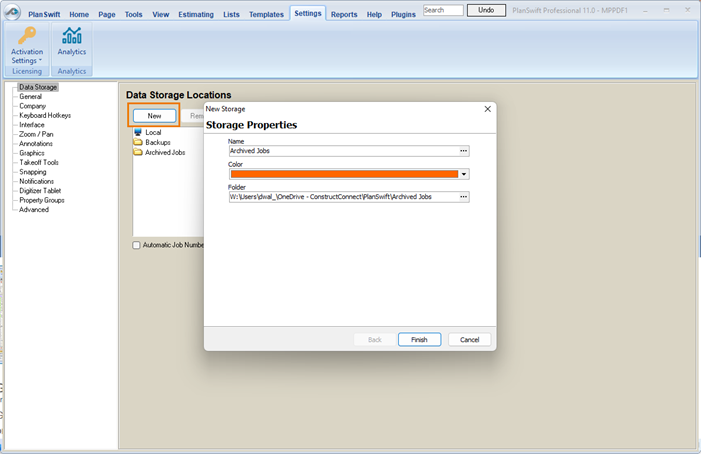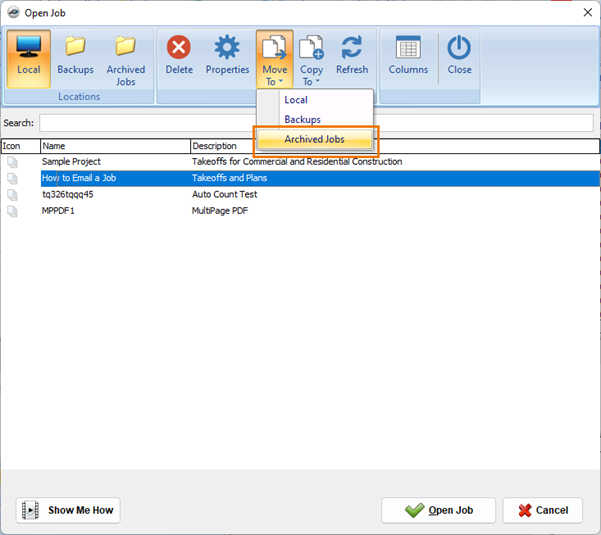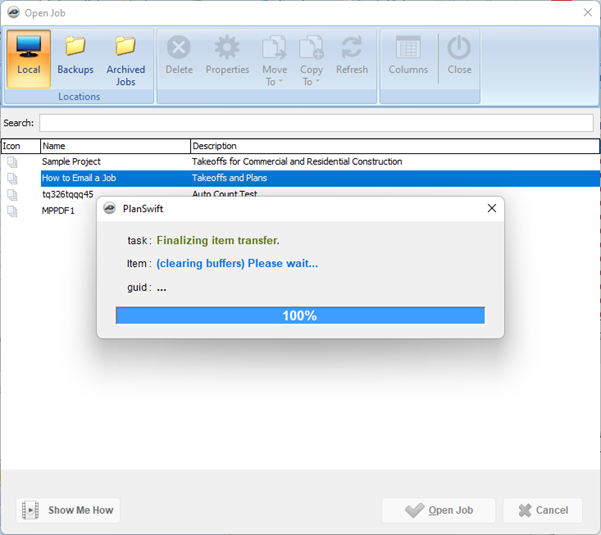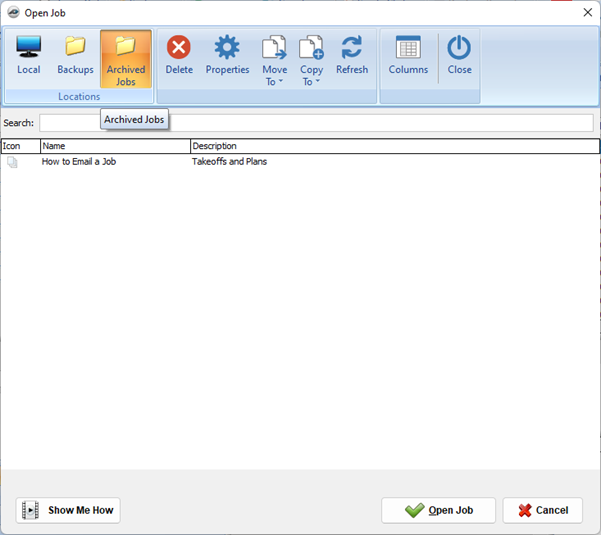As time goes by, you probably will create a lot of jobs in your default Storage Location that you don't need to see regularly, but you don't want to delate, either. Using PlanSwift Storages, you can easily create an Archived Jobs folder and move jobs to it to clean up your default Storage Location (and the Open Jobs dialog box).
Archiving Jobs Within PlanSwift
Create Data Storage
First, create a new data storage named "Archived Jobs".
We recommend creating this Data Storage on a network drive or even in OneDrive, Dropbox, or Google Drive (or some other location that is not on the same hard drive as your working data store). You can even use an external hard drive or USB thumb drive to create the backup Storage location, just be sure it is always available/plugged in when you are running PlanSwift.
When you set up a Storage Location on a network, others may have access to that location. It is imperative that you do not attempt to open the same job file at the same time, this will cause the job file to become corrupt and unusable. Also, if other users have access to this location, they could delete your archived jobs, just be aware of who has access to your network location.
For more information on creating a Network Data Store please review Data Storage.
Move Jobs to Archived Jobs Storage
After you set up your backup Storage Location,
- Click the Home tab,
- Then click Open on the ribbon bar
- Locate and select the job you want to backup
- Click the Move To button and select your "Archived Jobs" Storage Location from the list
You'll see a screen similar to this for a few moments:
And then that job will no longer appear in your default "Local" Open Job list:
If you ever need to access that job again, just click on the "Archived Jobs" Storage Location in the Open Job dialog box:
It's a good idea to copy this job back to your default/working Storage Location rather than work on it from the Archived Jobs folder.




